


Sikorsk VS-44 New England Air Museum (Co)
English translation
Photos tirées du site de Bill Malloney
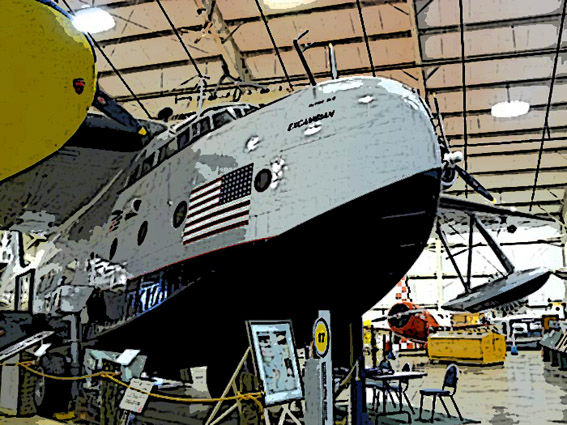 |
le Sikorsky VS-44 était un grand hydravion quadrimoteur construit aux Etats-Unis au début des années 40 pour le transport aérien des voyageurs transportant 40 passagers ou plus au dessus de l'océan Atlantique. Seuls 3 ont été produits, Excalibur, et Exeter Excambian commandés par American Export Airline (AEA)
Ces hydravions ont été construits par Sikorsky Aero Engineering Company propriété de Igor Sikorsky
Qui est Sikorsky ?
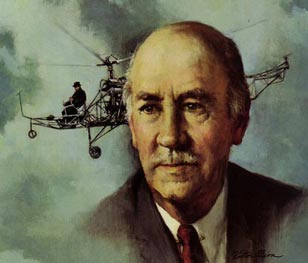 |
| Igor Sikorsky 1889 1972 |
Igor Sikorsky est un immigrant russe qui a toujours eu un amour pour les gros avions et construit son premièr, le quadrimoteur Mourometz Ilia, en Russie. La révolution marxiste exile Sikorsky aux États-Unis et une fois qu'il est sur place, il entreprend immédiatement de recueillir des fonds pour construire un nouvel avion mais qui sera un hydravion.
Pourquoi? Il a estimé que les grandes villes américaines de la fin des années 1920 n'avaient pas les aéroports, mais ils sont habituellement situés pres de grands plans d’eau
Les hydravions sont donc utiles et peuvent emporter de lourdes charges .
Pour concurrencer les paquebots transatlantiques tels les SS Normandie, Queen Mary, ou United States qui font traverser l’océan Atlantique en moins de quatre jours à leurs passagers dans le luxe et l espace ( pour certains !) les constructeurs d'aéronefs travaillent sur des projets deavions ou le passager aura de la place et du confort en plus de la vitesse L'âge d’Or des clippers est né
Tous les constructeurs sont présents sur ce segment les Consolidated Commodore ,Boeing Clipper, Short,Empire, Bréguet, Latécoére 631, Dornier Dornier X et le Sikorsky S38 . ils cherchent a construite un avion luxueux pouvant franchir l’Océan en 22 heures.
.jpg) |
| Consolidated Commodore |
.jpg) |
| Dornier X |
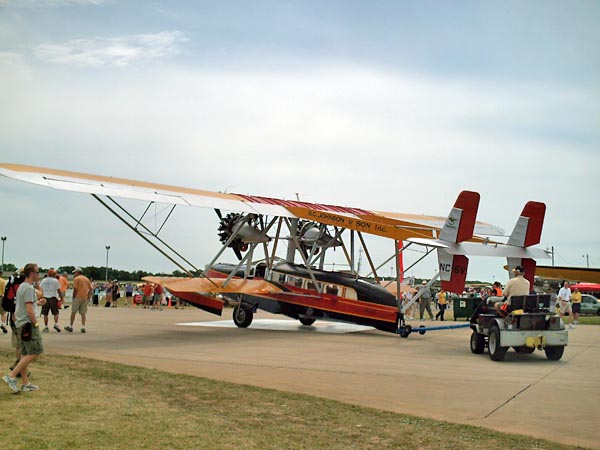 |
| Sikorsky S38 (Internet) |
Même si ces machines n'ont jamais été produites en grand nombre, ces gros hydravions quadrimoteurs apportent une solution au problème du transports transatlantique
Les vols de longue durée entrainent les transports de petites charges utiles, ce qui donne plus d’espace aux passagers embarqués libres de marcher d’aller au fumoir à la salle à manger, et de dormir sur ces vols .La liberté de circulation était le luxe ultime, avec la vitesse. Ceci parait dérisoire de nos jours
Fondateur de la Pan Am, Juan Trippe diplômé de Yale prend pour sienne l’idée d’'être un pionnier dans le voyage aérien international. Il a exploité Consolidated Commodores, acquit quand Pan Am prend la ligne NYRBA, ( New York, Rio and Buenos Aires Line ) Les avions sont modernes, mais leur origine militaire est visible de sorte que lorsque Trippe voit le Sikorsky S-38 au lignes épurées avec des cabines insonorisées et richement meublées il voit le moyen de rivaliser avec n'importe quel navire de croisière. A la suite du S-38 arrive en plus grand le S-40, puis le S-42. Le futur frappe à la porte bientôt la Pan Am mise sur l’ouverture du trafic vers l'Amérique du Sud et au-delà .
(1).jpg) |
| S 42 |
.jpg) |
Développement
Au début des années 30, les grands hydravions quadrimoteurs donnent aux voyageurs le sentiment de liberté et de luxe avec leurs salle à manger les fumoir et les couchettes
Sikorski fabriqué des hydravions comme le S 42 connu comme étant un « Pan Am Clippers »
Mais, pour le Pacifique la Pan Am ont besoin d'un avion à plus long rayon d’action que ce qu'offrait le S-42 Comme les autorités soviétiques ne voulaient pas donner l’autorisation à la Pan American World Airways exploitant la route du Nord de se ravitailler en Sibérie L'avion devant aller vers les iles Hawaii devait voler sur une tres longue distance .Le S-42 n’avait pas le rayon d action suffisant pour cette ligne Aussi la Pan Am recherche un avion ayant une plus grande allonge
Glenn Martin Company construit un nouveau hydravion le Glenn 130, qui a eu un incroyable rayon d’action de 5150 kms Après. discussion Juan Trippe président de la Pan Am
.jpg) |
| Boeing 314 Clipper |
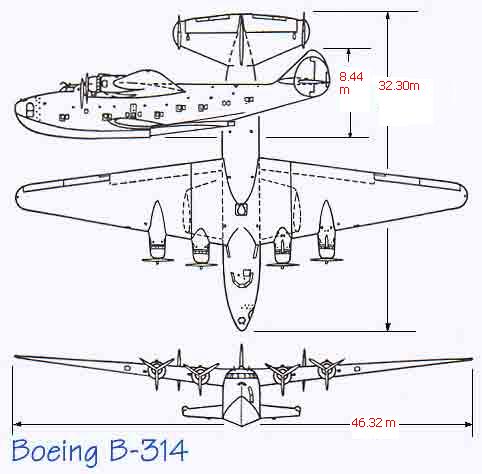 |
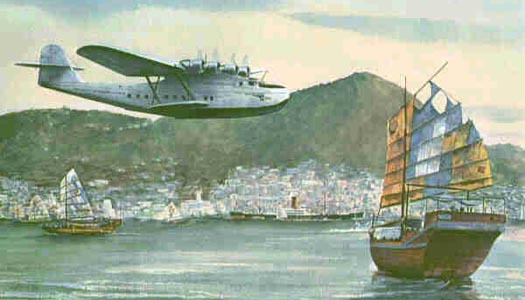 |
| Glenn 130 |
.jpg) |
choisit d'acheter des Glenn 130 et des Boeing 314 Clipper au lieu d'une mise à jour de la version du S 42
Mais la logistique pour les Hydravions est lourde (flottille de navires établissant des escales pour les ravitaillement de l appareil en vivres et carburant ,des antennes relais pour les communications
La clientèle étant impatiente bientôt Trippe s’apprête à acheter des Boeing plus rapides et ayant plus de rayon d action Cet avion est basé sur les études sur un prototype de bombardier, le XB -15
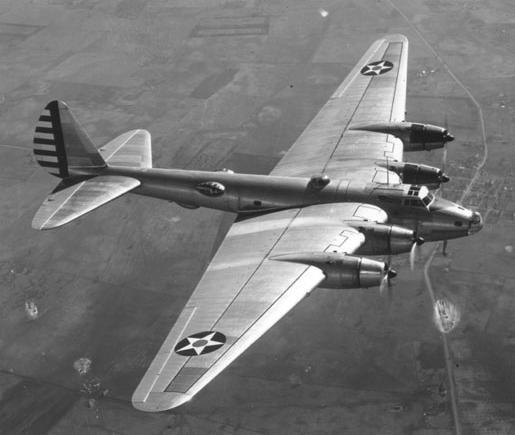 |
| X 15 |
Le Boeing 314 a un rayon d’action de 5650 kms Il possède, salons, salles à manger, salles de bains et une suite pour une lune de miel
En 1940, Sikorski, en s’associant avec Chance Vougth produit le VS-44.
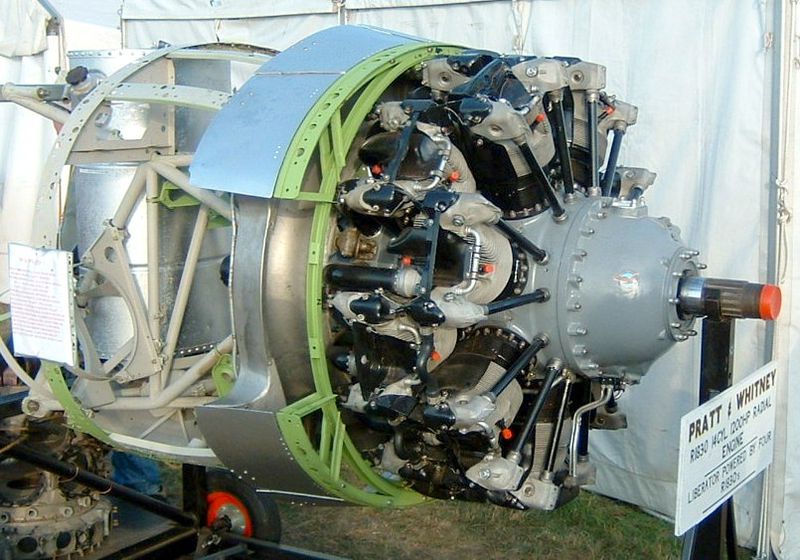 |
| Pratt et Whitney Twin Wasps de 1200 CV |
Il s'agit d'un hydravion quadrimoteur équipé de moteurs Pratt et Whitney Twin Wasps de 1200 CV chacun,
Il mesure 24 m de longueur et pèse de 26 T
Il est plus petit que le Boeing mais il est rapide et il a une autonomie de 6400 km, soit 800 kms de plus que le Boeing
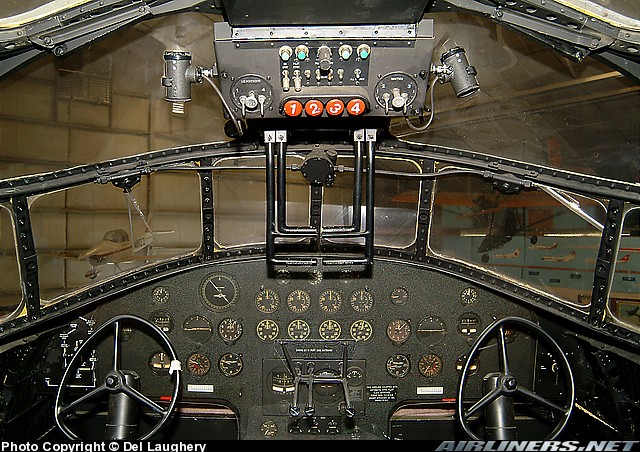 |
| Internet |
Le S-44 bat plusieurs nouveaux records du monde, après sa mise en opération, mais la production de cet avion ne couvrira jamais les couts du développement
Il n a été construit que 3VS 44 pour le compte de American export Airlines (AEA
Excalibur (NX41880; plus tard, comme NC41880),
Excambian (pas NX; plus tard, comme NC41881),
Exeter (pas NX; plus tard, comme NC41882).
La vie opérationnelle
Au début de la 2e Guerre Mondiale ces hydravions ont été réquisitionnés par l’US Navy
L'Excalibur s'écrase au décollage en 1942
Après la 2e Guerre Mondiale Les 2 VS-44 rescapés continuent à voler pour l'AEA, rebaptisé American Overseas Airlines (AOA)
Le 15 août 1947,l’ Exeter, est détruite à l’atterrissage à Montevideo
Le survivant l’Excambian transporte des milliers de passagers jusqu'en 1967
Le 3 Janvier 1969, il a été très endommagé dans le sud des îles Vierges. Où il est ensuite converti en Mars 1972 en stand de hot dog.
En 1976 l’Excambian, a été remis à un Musée de l'aviation. Il a été sauvé, il est maintenant exposé au New England Air Museum Connecticut depuis le 19 Novembre, 1998 portant la même livrée de l’ AEA
Caractéristiques
Poids brut: 26,082 kg
Longueur: 24,15 m
Envergure: 37,79 m
Hauteur: 8,41 m
Moteur: 4 × PW R 1830 1200 HP chacun
Vitesse de croisière: 257 km / h
Autonomie 6,116 km
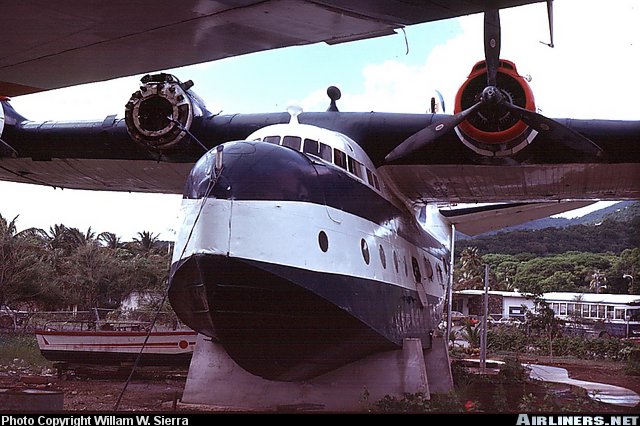 |
| Internet |
Sikorsk VS-44 Excambian
 |
Sikorsk VS-44 were large four-engined USA flying boats built in USA in the early 40s for transatlantic air travel trade carrying 40 or more passengers across the Atlantic Ocean. Only 3 were produced, Excalibur, Excambian and Exeter ordered for American Export Airline (AEA)
This flying boats were built par the Sikorsky Aero Engineering Company proprety of Igor Sikorsky
Who is Sikorsky ?
.jpg) |
| Igor Sikorsky 1889 1972 |
Igor Sikorsky was a russian immigrant always had a love for large aircraft and built his first, the four-engined Ilia Mourometz, in Russia. The Marxist revolution exiled Sikorsky to the United States and once he landed, he immediately set out to raise money to build a new airplane but a seaplane.
Why ? He reasoned that large US cities of the late 1920’s lacked airports, but they were usually located on large, sheltered bodies of water, so seaplanes made sense. Long reaches for takeoff under heavy loads were ideal.
To concurrence Transatlantic ships Liners like Normandie, Queen Mary, or United States, who have reducing transatlantic travel to under four days and to transports celebrities quickly across the Oceans with luxuries, and more space Aircraft constructors work upon project of aircraft liner able to procure speed comfort and luxury at the passengers during the fly
The age of the Air clipper was born
All the constructors are present for this competition Consolidated, Commodore Boeing, Clipper Short,Empire Bréguet, Latécoére 631 Dornier Dornier X and Sikorsky S38 to built and VIP aircraft able to crossing the ocean in 22 hours!
.jpg) |
| Consolidated Commodore |
.jpg) |
| Dornier X |
 |
| S 38 internet |
While they were never produced in great numbers, the big four-engine flying boats built by companies like soon established the legitimacy air travel craved. At first, long flights meant small payloads, giving passengers a sense of airborne freedom as they walked from smoking lounge to dining room, to sleeping compartment on these flights. Freedom of movement and more of the ultimate luxury, speed. Today’s airborne comforts pale in comparison
Pan Am founder, Yale-schooled sophisticate Juan Trippe bought into the idea of being an international air travel pioneer. He operated Consolidated Commodores, acquired when Pan Am took over NYRBA, the New York, Rio and Buenos Aires Line. The planes were modern, but utilitarian, with military roots, so when Trippe encountered Sikorsky’s sleek S-38 he added soundproofing and rich cabin furnishings to rival any cruise ship. Following the S-38 was the larger S-40, then the sleeker, low drag S-42. The future had arrived and soon Pan Am was opening the skies to South America and beyond.
(1).jpg) |
.jpg) |
Development
In the early 30s, large four-engine flying boats built by companies giving to the passengers a sense of airborne freedom as they walked from the smoking lounge to dining room and sleeping compartment.
Sikorsky manufactured flying boats, like the S 42 know as Pan Am Clippers.
But for the Pacific Pan Am need a plane with longer range than was available with the S-42. S Why Soviet authorities wouldn’t let Pan American World Airways operate the northern route and refuel in Siberia The Plane could go directly across, from California via Hawaii upon an astronomical distance The S-42’s could not have the capacity to flown on this range So Pan Am look for an airplane with more range. And Glenn Martin Company had built a new flying Boat the 130, which had an incredible 5140 kms range.After discussion Juan Trippe Pan Am's president, choose to purchase some Martin M 130 and Boing 314 Clipper instead of a update version of the S 42
.jpg) |
 |
 |
.jpg) |
But the logistic for this flying boat was heavy ( flotilla of company ships out to establish waypoints of civilization on remote Pacific islands from which the aerial clippers would hopscotch. Fuel was cached, prefab hotels and kitchens )
The public was eager and soon Trippe was ready to buy Boeing’s faster, longer-legged 314.who his based on a stillborn bomber prototype, XB –15
 |
| X15 |
Boeing’s 314 as a range of 3,500 miles, lounges, dining rooms, opulent bathrooms and recliners and an honeymoon suite
• in 1940, Sikorsky,after a joint venture with Chance Vougth produced the VS-44.
 |
| Pratt and Whitney Twin Wasps of 1,200 HP |
It is a flying boat with four twin-row Pratt and Whitney Twin Wasps of 1,200 HP each,
He as 24 m in length and weighed in 26 T
It was smaller than the Boing but he was faster and he has a of 6,400 km, out distancing the big Boeing by 800 km
 |
| Internet |
The S-44 brought home several new world records after it went into operation, but the limited production would never even recoup the VS-44’s development costs.
Only American export Airlines (AEA) ordered three VS-44s,
Excalibur (NX41880; later as NC41880),
Excambian (no NX; later as NC41881),
Exeter (no NX; later as NC41882).
S 44 Operational Life
At the outbreak of wW2 this flying boats were requisitioned by the Navy
The Excalibur crashed on takeoff in 1942
After WW2 the two remaining VS-44 continued to fly for AEA, now renamed American Overseas Airlines (AOA)
In August 15, 1947 Exeter was destroyed on crash in Montevideo
Alone Excambian carried thousands of passengers until 1967
In January 3rd 1969 he was extensively damaged in South Virgin Islands. An he was in March 1972 converted into a hot dog stand.
In 1976, Excambian was donated to Aviation Museum . He was saved Now it is on display in New England Air Museum in Connecticut since November 19th, 1998 wearing the same white and blue AEA color scheme
Technical data
Gross weight: 26,082 kg
Length:24.15 m
Wingspan:37.79 m
Height:8.41 m
Powerplant: 4 × PW R 1830 1200 HP each
Performance
Cruise speed: 257 km/h
Range:6,116 km